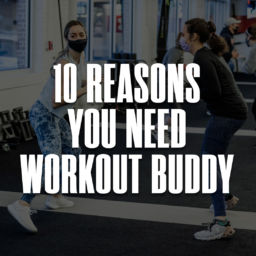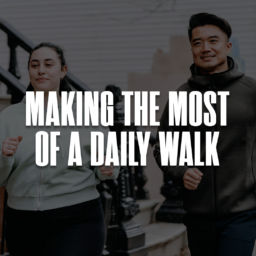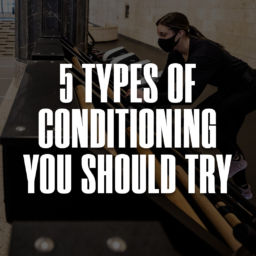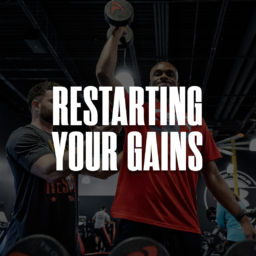Evan Cocke, M.S., TPI, CPT
I am a strong believer that lower body and core strength are vital for golfers of all skill levels. Power is generated from the ground up through the kinetic chain. This means that your lower body needs to be utilized in order to generate a powerful and efficient golf swing. When golfers have solid lower body mechanics the rest usually falls into place.
Also, the body is protective of itself. It is not going to like being put in positions that it is not physically able to handle. The body will compensate for a lack of lower body strength by utilizing too many of the smaller, less powerful muscles that will lead to inefficiency and risk of injury through overuse. Not only will lower body/core strength help the golf swing tremendously, it will help with overall health and wellness. The common swing faults listed below have a multitude of factors. One they all have in common is a lack of lower body strength, mobility or stability.
These are the top 3 swing faults I have seen as a teaching pro and a golf performance specialist.
1. Early Extension
This Swing fault is one of the most commonly seen faults in all of golf. This is where you thrust your hips forward in the downswing. This causes you to raise upright and use your wrists to try to compensate at impact. This causes both hooks and blocks. One of the main causes of this swing fault is a lack of hinge or squat pattern development. The pelvis is unable to rotate around due to a lack of lower body strength and mobility. Weak glutes and poor hip internal rotation are another factor to look at. Weak abdominal core and spinal stability could also be a suspected culprit.
To fix this work on hinge and squat progressions. Work your way from the basic hinge movement with a dowel rod or golf club and then start to load that motion by doing dumbbell deadlifts, romanian deadlifts and hex bar deadlifts. If you are new to squatting and have trouble getting depth then start with counter weighted squats such as goblet squats and work on getting that full range of motion. This will help with opening up the hips as well as teaching proper squat technique. These motions will teach bracing of the core/spine as well as the hinge and squat. Hinges and squats should be a central focus of all golf programs.
2. Over the Top
The over the top is arguably the most commonly seen swing fault in all of golf. This is characterized by a pulling motion of the upper body causing a steep attack angle. Most
of the time this will result in a huge slice but if the clubface is closed then this will result in a pull/hook.
This is usually caused by an upper body dominant golf swing. A lack of lower body strength, hip mobility, ability to shift pressure, or disassociate the upper body from the
lower body are all contributing factors.
Things that can be done to help address this issue are strengthening of the lower body (primarily glutes) and strengthening the core muscles. Squats, hinge and bracing exercises will help tremendously. Bird Dogs, Dead Bugs, Paloff Presses, and chops are just a few of the core exercises that will help with overall core strength. Some of this can be addressed from a technical aspect. Without a strong base and the ability to disassociate it will be tough to keep consistent with swing changes because your body will instinctively try to do what is comfortable.
3. Slide
The slide is characterized as too much lateral movement in the golf swing without any rotation. Lateral pressure shifts are necessary in an efficient golf swing but the lower body needs to be stable to allow the rotational/vertical aspects of the golf swing to happen.
A lack of lower body strength and stability is one of the main culprits. It could be that you have the strength but do not know how to express it. There could also be a limitation with lead hip internal rotation.
Like with most of these swing faults the glutes are important. Glute bridges, hip thrusts, hinges, lunge variations and squat variations are all exercises that will help aid in lower body strength and stability. Unilateral exercises and exercises that teach you to produce
and absorb force will help as well. Single leg hops/lands, lateral lunges, lateral bounds, and speed skaters are a few examples. Medicine ball variations are some of my favorites. Utilize a split stance to enhance your slams/rotations. This will aid in feeling unilateral stability through a dynamic movement.
In Summary
TPI movement screens will be helpful in figuring out where your individual limitations lie and why these swing faults might be happening. Working with a strength and conditioning coach or TPI certified instructor will allow you to take the guesswork out of things. They will be able to pinpoint your limitations in movement or strength based off of certain screens and then will be able to devise a plan to address those issues. If you already have a substantial amount of lower body strength but do not know how to express that strength then it will require a more targeted approach focusing on specific exercises based on your individual limitations. There are a variety of different exercises that will be able to get you to the same result. It is about finding the best ones for you that give the greatest rate of return.
In general, if you have lower body/core strength the golf swing will seem a lot easier. It will be easier to make the swing changes you need with your PGA professional. Your body will be able to handle certain positions with ease and your body awareness will improve. Your risk of injury should go down, performance will go up and the scores will start to improve.










